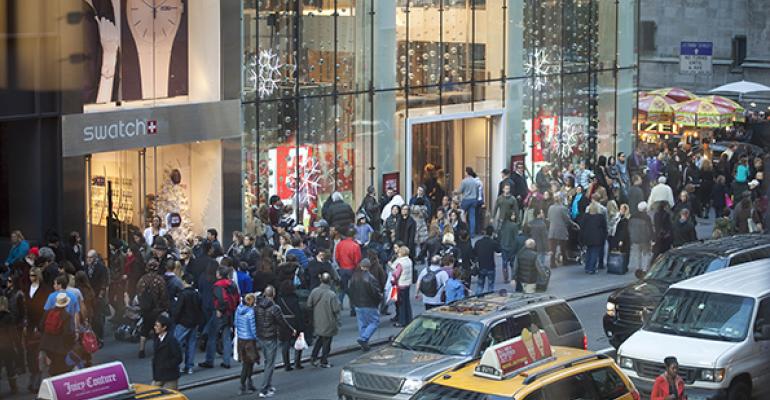Ask most retail real estate investors about their ideal set-up and they’ll tell you they want a class-A property featuring credit tenants, signed to long-term leases with rental accretion, in a high-barrier-to-entry market with strong demographics.
Properties that fit that bill carry high values and trade for cap rates in the low single digits. And part of the reason is that such properties remain quite difficult to develop and stabilize.
A panel of experts featuring Kenneth F. Bernstein, president and CEO of Acadia Realty Trust; MaryAnne Gilmartin, president and CEO of Forest City Ratner Cos.; Steven G. Vittorio, managing director with Prudential Real Estate Investors; and Donald C. Wood, CEO of Federal Realty Investment Trust, discussed the vagaries of developing urban retail—particularly mixed-use properties—at the ICSC NOI+ Asset Management Conference in Chicago on Nov. 20-21.
Even defining what “urban” means even ended up being a contentious point. Bernstein pressed the panel on whether operating in top-flight urban retail corridors—places like Fifth Avenue in New York or the Magnificent Mile in Chicago—was in the same category as Fordham Road in the Bronx.
“We don't have a set definition of urban retail,” Vittorio said. “It comes down to [things like] population density and barriers to entry... It comes down to whether … the ability to replicate that kind of retail is available.”
Wood added, “What’s so funny about this industry is that we make sure we have these exact categories. All of that is nonsense. What we're talking about is investing in retail-based properties in areas with high barriers to entry and where people can spend… There should be a presumption that it's more complicated and that it costs more to do [compared to suburban]. So it better generate higher rents.”
The consensus among the panel was that top quality urban retail assets are currently fetching cap rates in the low 4-percent range. That is about a 150 basis point premium to average cap rates on top-flight centers in inner-ring suburbs.
With that spread, the questions for developers is how to derive additional value from urban properties, as well as convincing other investors and lenders to finance such properties given the added risk involved. The panel agreed that the development return premium would be about 200 basis points above the anticipated exit cap rate. The challenge is finding a mix of tenants—both at the retail base and the potential uses above—that can drive value.
“When you have to start with today's land values in very urban areas, with very complex projects ahead of them, it really stretches the imagination as to whether value can be created quickly,” Wood said. “More likely, you can create value over time.”
The ability to go vertical can help. The panelists agreed that getting the street-level retail right was a critical first step. After that, figuring out what to put above—whether office, hotel or residential—is dictated by market conditions and timing. But the potential value of that space can be increased by having a strong retail base to build from.
Gilmartin also talked of the experience of building the Atlantic Terminal mall a decade ago, at a time when doing anything in Brooklyn was considered a huge risk. For Forest City, the risk was mitigated by the fact that it had secured the land at a low cost and so had a lot of potential upside. In practice, the development has been massively successful by bringing retail to an underserved market. The Target at the property, for example, is now the best-performing location for the department store chain.
At the time, however, Forest City had to convince tenants to lease space at the Atlantic Terminal mall, often on very favorable terms. As a result, today Forest City would like to redevelop the original property and bring it in line with the quality of the more recent Atlantic Yards project, but it’s locked into long-term leases.
“Now you have to figure out ways to change up the mix,” Gilmartin said. “The neighborhoods has outgrown the center.”

